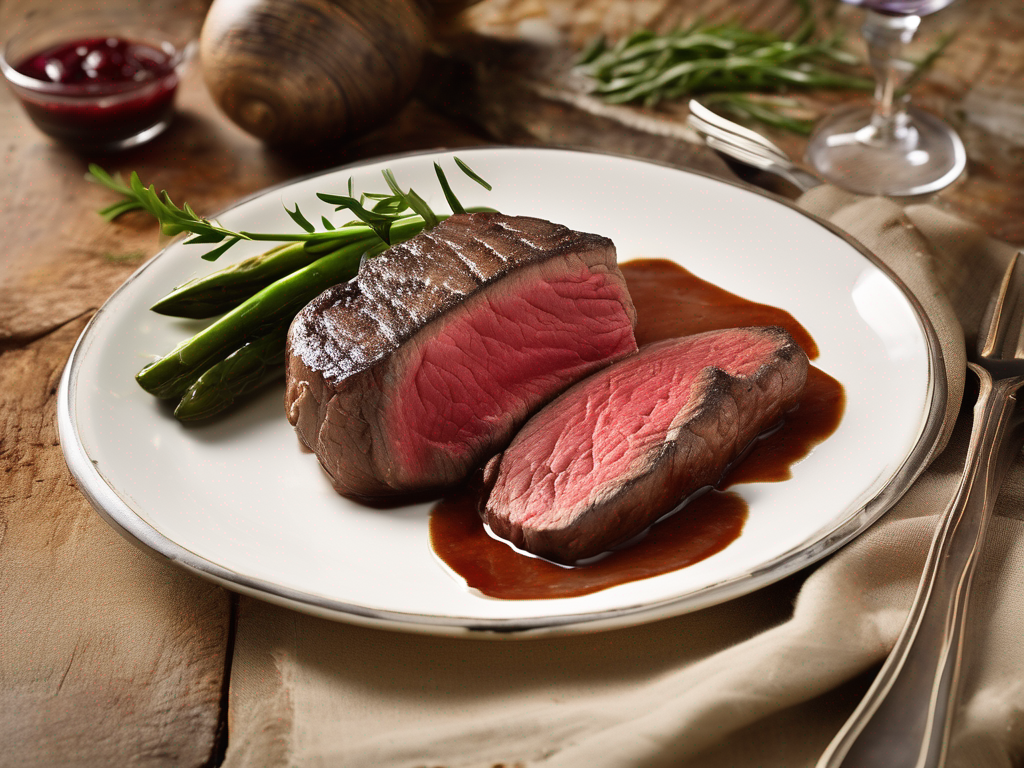
The Ultimate Guide to Safely Defrosting Bison Steak
Get Your Free Food Safety Cheat Sheet
30 most common foods with instant answers. Print it and stick it on your fridge—completely free!
The Ultimate Guide to Safely Defrosting Bison Steak
When it comes to cooking bison steak, proper defrosting is crucial to maintain its quality and ensure food safety. Bison meat is lean, flavorful, and nutritious, making it a popular choice for many home cooks and chefs alike. In this comprehensive guide, we will explore the best practices for safely defrosting bison steak to preserve its taste and texture. (Bison steak)
Why Proper Defrosting Matters for Bison Steak
Proper defrosting of bison steak is essential for several reasons:
- Maintaining Quality: Improper defrosting can lead to texture changes and loss of flavor in the meat.
- Food Safety: Thawing meat at the wrong temperature can promote bacterial growth and increase the risk of foodborne illness.
- Even Cooking: Thawed meat cooks more evenly, ensuring that your bison steak is cooked to perfection.
Methods for Defrosting Bison Steak
There are several safe methods for defrosting bison steak, each with its own advantages and considerations:
1. Refrigerator Thawing
- Place the bison steak on a plate or tray to catch any drips.
- Allow the steak to thaw in the refrigerator for 24-48 hours, depending on its size.
- Refrigerator thawing is the safest method as it maintains a consistent temperature throughout the process.
2. Cold Water Thawing
- Place the sealed bison steak in a leak-proof plastic bag.
- Submerge the bag in cold water, changing the water every 30 minutes.
- Cold water thawing is faster than refrigerator thawing but requires more attention to ensure the water stays cold.
3. Microwave Thawing
- Use the defrost function on your microwave to thaw the bison steak.
- Check the meat frequently to prevent partial cooking and ensure even thawing.
- Microwave thawing is the quickest method but may result in uneven thawing if not monitored closely.
4. Cooking from Frozen
- If you're short on time, you can cook bison steak directly from frozen.
- Increase the cooking time and lower the heat to ensure even cooking.
- Cooking from frozen is convenient but may result in a slightly different texture compared to thawed steak.
Tips for Safely Defrosting Bison Steak
Follow these practical tips to ensure safe and effective defrosting of your bison steak:
1. Use Proper Packaging
- Keep the bison steak in its original packaging or transfer it to a sealed container or bag to prevent cross-contamination.
- Ensure the packaging is leak-proof to avoid any juices from dripping onto other foods.
2. Plan Ahead
- Allow enough time for the bison steak to thaw properly, especially if using the refrigerator method.
- Avoid defrosting meat at room temperature, as this can promote bacterial growth.
3. Monitor Temperature
- Use a food thermometer to check the temperature of the thawed bison steak before cooking.
- The internal temperature should reach 145°F (63°C) for safe consumption.
4. Cook Thoroughly
- Cook the bison steak to the recommended internal temperature to ensure any bacteria are killed.
- Avoid undercooking or overcooking the meat, as this can affect both safety and taste.
Conclusion
Properly defrosting bison steak is a crucial step in preparing a delicious and safe meal. By following the recommended methods and tips outlined in this guide, you can preserve the quality of the meat and enjoy a flavorful bison steak every time. Remember to plan ahead, use safe thawing methods, and cook the meat to the right temperature for a successful culinary experience.
For more information on cooking and storing bison steak, check out our [bison steak](/food/bison steak) guide. Happy cooking! (Bison steak)
Related Posts
Here are some other articles you might find helpful:
Authoritative Food Safety References
These agencies and university labs inform every tip and health precaution we publish.
USDA FoodKeeper – Cold Storage Guidelines
Official refrigerator, freezer, and pantry timelines maintained by the U.S. Department of Agriculture.
Visit USDA FoodKeeperFDA Produce Safety Rule & Grower Guidance
Field-to-fridge handling practices that prevent contamination of fruits, vegetables, and leafy greens.
Visit FDA Produce SafetyCDC Foodborne Illness Prevention Hub
Surveillance-backed guidance on pathogens, symptoms, and steps to reduce foodborne illness risk.
Visit CDC Food SafetyUC Davis Postharvest Technology Center
University research detailing optimal storage atmospheres for produce after harvest.
Visit UC Davis PostharvestPenn State Extension – Home Food Preservation & Safety
Peer-reviewed extension bulletins on safe canning, chilling, and reheating practices.
Visit Penn State ExtensionGet Your Free Food Safety Cheat Sheet
30 most common foods with instant answers. Print it and stick it on your fridge—completely free! Want more? Upgrade to the complete guide with 70+ foods.
Scan your food directly and get instant safety info using our AI-powered camera feature.